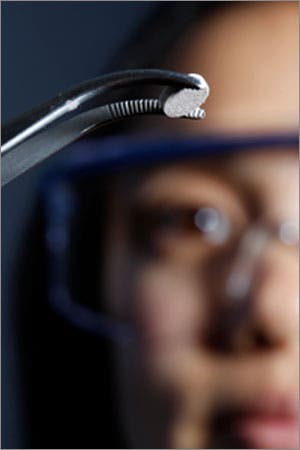A cross-disciplinary team of scientists at Harvard that developed a novel type of vaccine for treating melanoma – the most lethal form of skin cance – recently announced the vaccine will enter its Phase 1 clinical trial. The announcement comes just a few years after the vaccine was tested on mice, 50% of whom showed signs of complete tumor regression. Typically, cancer treatments need a lot more time to enter human trials.
The combined effort was coordinated at the Wyss Institute for Biologically Inspired Engineering at Harvard University.
“This is expected to be the first of many new innovative therapies made possible by the Wyss Institute’s collaborative model of translational research that will enter human clinical trials,” said Wyss’ founding director, Don Ingber of Children’s Hospital Boston, who is also the Judah Folkman Professor of Vascular Biology at Harvard Medical School and a professor of bioengineering at SEAS. “It validates our approach, which strives to move technologies into the clinical space much faster than would be possible in a traditional academic environment. It’s enormously gratifying to see one of our first technologies take this giant leap forward.”

This disk-shaped, biodegradable sponge contains growth factors and components of each patient’s tumors. Researchers at the Wyss Institute and clinicians at Dana-Farber Cancer Institute hope that when it’s implanted under the patient’s skin, it will spur the patient’s immune system to attack the patient’s tumors and destroy them.
Therapeutic cancer vaccines traditionally involve a very cumbersome insertion process in which doctors first need to extract the patient’s immune cells, reprogram them in the lab, then insert them back. The Harvard researchers approach is similar in working principle, however the key difference is that the reprogramming is made “on-site”, inside the patient without any need for extraction and later insertion.
Using the method developed at Wyss, doctors simply have to implant a disk-like sponge about the size of a fingernail that is made from FDA-approved polymers. It is this sponge, implanted right under the skin, that does the immune cell reprogramming, instructing them to travel through the body, home in on cancer cells, then kill them.
In 2009 the researchers published a paper in which they reported the findings of their preclinical trial on mice. Some 50 percent of mice treated with two doses of the vaccine — mice that would have otherwise died from melanoma within about 25 days — showed complete tumor regression.
“It is rare to get a new technology tested in the laboratory and moved into human clinical trials so quickly,” said Dranoff, who is also a Professor of Medicine at Harvard Medical School, and leader of the Dana-Farber/Harvard Cancer Center program in cancer immunology. “We’re beyond thrilled with the momentum, and excited about its potential.”
The goal of the Phase I study, which is expected to conclude in 2015, is to assess the safety of the vaccine in humans. While the vaccine was designed for skin cancer, the researchers claim it is possible to adapt it to other forms of cancer as well. So far, the findings seem very promising. It remains to be seen how effective it is on humans.









